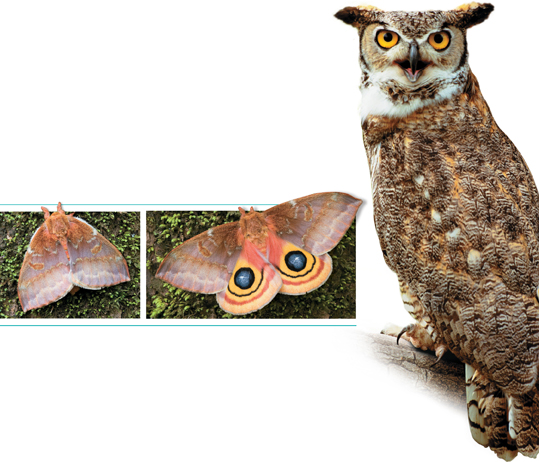You've learned how physical traits are shaped by instructions coded in an organism's genome. The nervous system, which makes behaviors possible, is clearly influenced by genes. So, it shouldn't surprise you to learn that some behaviors are also influenced by genes and can therefore be inherited. That's why certain behaviors can evolve under the influence of natural selection, just as physical traits do. For example, the genes that code for the behavior of the moth in Figure 29–1 help the moth escape predators.  If a behavior that is influenced by genes increases an individual's fitness, that behavior will tend to spread through a population. Over many generations, various kinds of adaptive behaviors can play central roles in the survival of populations and species.
If a behavior that is influenced by genes increases an individual's fitness, that behavior will tend to spread through a population. Over many generations, various kinds of adaptive behaviors can play central roles in the survival of populations and species.
 In Your Notebook In your own words, explain how animal behavior can evolve through natural selection.
In Your Notebook In your own words, explain how animal behavior can evolve through natural selection.

FIGURE 29–1 Anti-Predatory Display Moths of the genus Automeris normally rest with their front wings over their hind wings (left). If disturbed, the moth will move its front wings to expose a striking circular pattern on its hind wings (right). This behavior may scare off predators that mistake the moth's hind-wing pattern for the eyes of a predatory owl such as the great horned owl. Infer Given that the moth displays this wing pattern and doesn't fly away when confronted by a predator, predict two characteristics of the moth's typical predator.
Innate Behavior
 What is an innate behavior?
What is an innate behavior?
Why do newly hatched birds beg for food within moments after hatching? How does a spider know to spin its web? These animals are exhibiting innate behaviors, also called instincts.  Innate behaviors appear in fully functional form the first time they are performed, even though the animal has had no previous experience with the stimuli to which it responds. The suckling of a newborn mammal is a classic example of a simple innate behavior. Other innate behaviors, such as the weaving of a spider web or the building of hanging nests by weaver birds, can be quite complex. All innate behaviors depend on patterns of nervous system activity that develop through complex interactions between genes and the environment. Biologists do not yet fully understand just how these interactions occur, but the usefulness of innate behaviors is obvious. They enable animals to perform certain tasks essential to survival without the need for experience.
Innate behaviors appear in fully functional form the first time they are performed, even though the animal has had no previous experience with the stimuli to which it responds. The suckling of a newborn mammal is a classic example of a simple innate behavior. Other innate behaviors, such as the weaving of a spider web or the building of hanging nests by weaver birds, can be quite complex. All innate behaviors depend on patterns of nervous system activity that develop through complex interactions between genes and the environment. Biologists do not yet fully understand just how these interactions occur, but the usefulness of innate behaviors is obvious. They enable animals to perform certain tasks essential to survival without the need for experience.

Table of Contents
- Formulas and Equations
- Applying Formulas and Equations
- Mean, Median, and Mode
- Estimation
- Using Measurements in Calculations
- Effects of Measurement Errors
- Accuracy
- Precision
- Comparing Accuracy and Precision
- Significant Figures
- Calculating With Significant Figures
- Scientific Notation
- Calculating With Scientific Notation
- Dimensional Analysis
- Applying Dimensional Analysis




